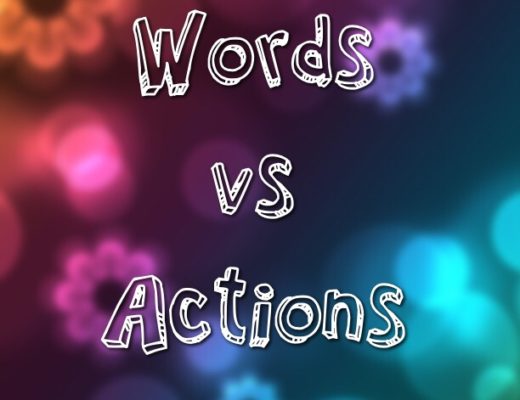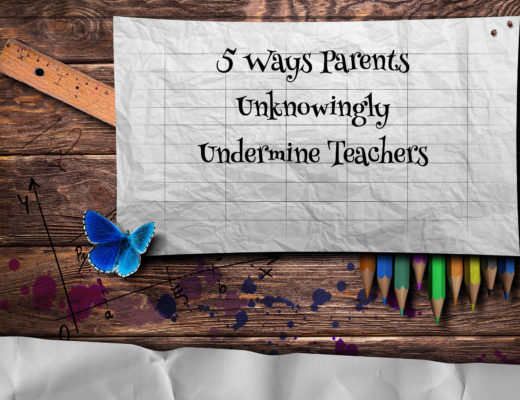Recently, my husband and I were discussing extrinsic versus intrinsic rewards for our children. Extrinsic rewards being tangible and visible rewards given for doing or achieving something; intrinsic rewards being from within, such as the feeling of satisfaction or contentment one finds from completing a task or from a job well done. We recognized this as something we needed to be mindful of in the parenting of our young children, as we didn’t want to start any patterns that we would have to keep up in the future to get our children to do something we wanted them to do.
It reminded me of a few conversations that I have had with parents of my students over the years. Some would reward for things such as good grades, doing chores, or for excelling in sports. While others would reward their children if they had a good day at school every day or if they accomplished all of their goals on their weekly chart. All of these reasons made sense to me on the surface, but after a little encounter with my daughter, it made me reconsider what is worthy of a reward AND what is an appropriate reward for a good deed.
When my daughter started three-year-old kindergarten, the teacher had a face chart system. The chart depicted one of three faces to represent how the child’s day went during specific times throughout the day. The looks included a smiley face, a worried face, and sad face. Like most parents, we celebrated the smiley faces, and we talked about any worry or sad faces. Without thinking about it much, we came up with the idea of having pizza Friday and a movie night with popcorn if our daughter maintained happy faces throughout the week. It was great, and we had fun most Fridays, until the first week our daughter had a few challenging days back to back, including that Friday, when she came home with another sad face. My natural cause and effect instinct was to say no pizza tonight because we have some things to improve. As I attempted to talk to my daughter and explain my “logical” reasoning for not having pizza and a movie, she thoughtfully said, “Mommy, can’t I just have a second chance?” I said, “Sure, next week we’ll try again.” She said, “No, no, mommy that’s not right! Can’t I have a second chance right now so we can have pizza for dinner today? Jesus gives everybody a second chance.” Jaw drop! Wow! Out of the mouth of babes! Without realizing it, she jolted my heart and conscience, and quickly gave me pause!
Why were we connecting a family fun night with good behavior? What message were we sending her? Does one have to be “good” to have fun with their family? My daughter’s reasoning carried so much wisdom for me and really made me consider things from a different perspective. There were probably several times that week that my husband or I messed up too, should we miss out on family fun because of that? That moment ignited a conversation between my husband and me about rewards, how we use the “reward” language, and for what purpose. It made me reflect on my days as a teacher; it was challenging to build intrinsic motivation in students that had gotten used to getting a tangible reward for all of the efforts they put forth. We didn’t want to create that pattern for our little kiddos.
We want to be intentional about this in our home, and it became a point of focus. How can we build intrinsic motivation and reward extrinsically when appropriate? How could we train our children to not just do what is right to get something but to do what’s right because its right? These were questions we started to discuss. We concluded that a balanced approach was most sensible. Being deliberate would help us make the best decisions in this regard. In an effort to build intrinsic motivation, I make it point to talk to my daughter about how she feels when she does something “good” so that she can make a connection with the good internal feelings that are attributed to making right choices.
On the other hand, we also talk about the not so good internal feelings she has when she does something wrong, as well as the steps she should take to make sure she doesn’t have those feelings in the future. I think that has been very impactful in attempting to build intrinsic motivation and an internal reward system. Children have to be able to connect with the emotions that accompany certain behaviors, whether that is the warm and fuzzy feelings that come from doing the right thing or working hard or the internal warning signs that come with before and after doing the wrong thing.
On the other end of this balanced approach is giving tangible rewards when our children go above and beyond the expectations and sometimes randomly for just everyday efforts. I also think it’s important to help our children make a connection with the natural rewards that come with extra energy, as well as random acts of kindness that are not deserved.
Being intentional is key! Just being conscious of the topic has helped us tremendously and made us keenly aware what to consider when the reward topic arises and thanks to our daughter, we are very intentional about considering what appropriate rewards are.
Application: The first step is evaluating how you use rewards with your children and reflecting on the results/effects you see as a consequence of those rewards. Do your children feel entitled to always receive rewards for certain things? Are they motivated internally to do the right thing or avoid the wrong thing or is their only drive earning something? These are just a few questions to consider as you evaluate. Secondly, make it a point to talk to your children about the feelings connected with making good and bad decisions.
Remember, I never try to make my experiences or knowledge a principle or standard for others but I share my experiences and knowledge with others hoping that through sharing, I might positively impact, inspire & empower someone else’s life. – Jill




No Comments